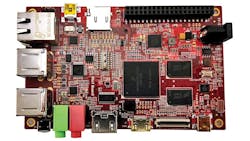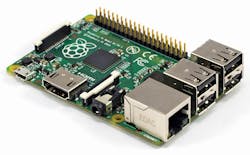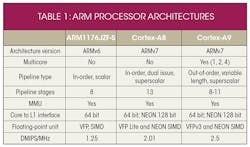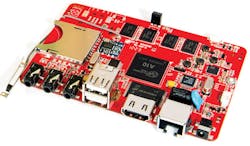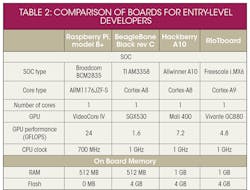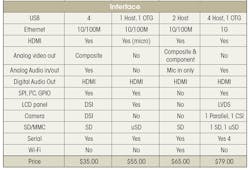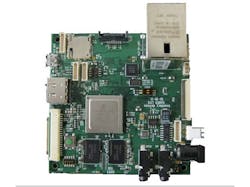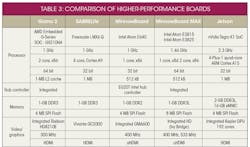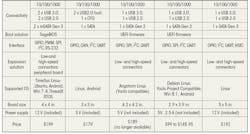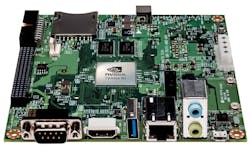What’s the Difference Between the Latest Embedded Dev Boards?
The landscape for embedded systems solutions has changed immensely over the past decade. Arduino, the open source computing platform, was the trailblazer for the DIY revolution. It not only brought an open-source hardware platform, but introduced a simple, easy-to-use software and IDE tool chain to the community. Another benefit of Arduino was its low cost, thus lowering the barrier of entry into embedded systems design. With many boards to choose from, let’s look at the different capabilities for the leading options and the best ways for embedded developers to access user support.
Similar to the Arduino, the Raspberry Pi was introduced as a teaching tool. The purpose behind Raspberry Pi was to help enhance the skill levels of students via an inexpensive computing platform that could boot into a programming environment. This would imply higher-performance hardware architecture and software functionality as compared to the Arduino.
This file type includes high resolution graphics and schematics when applicable.
The Raspberry Pi was the first low-cost ($35) single-board computer. It featured the Broadcom BCM2835, a low-power ARM1176JZ-F applications processor operating at 700 MHz (which can be overclocked). The SoC has a dual-core VideoCore IV multimedia co-processor and provides Open GL ES 2.0, hardware-accelerated OpenVG, and 1080p30 H.264 high-profile encode and decode. The GPU is capable of 1 Gpixel/s, 1.5 Gtexels/s or 24 GFLOPS of general-purpose compute and features a rich mix of texture filtering and direct-memory-access (DMA) infrastructure. The board comes with 512 MB of RAM and two USB2.0 ports, HDMI, a 10/100 Ethernet port, and an expansion connector for GPIO, I2C, and SPI connectivity.
The recently released model B+ added two more USB ports and more GPIO expanding to a 40-pin connector. Custom accessories were created to plug into this expansion connector, such as I/O control. The Raspberry Pi supports Debian and Fedora distributions for Linux. Because Canonical ended support for ARMv6 in favor of optimizing for ARMv7, Ubuntu is not officially supported on the Pi. The resource and memory requirements aren’t sufficient to support a Windows 8 installation. Given the video and graphics capabilities the Raspberry Pi is great for applications like multimedia servers and players such as XBMC (Fig. 1).
The BeagleBone Black, a completely open-source platform, is meant for both hardware and software developers. The BeagleBone Black Rev C is based on Texas Instruments’ Sitara AM3358, Cortex-A8 processor operating at 1 GHz and implements the ARMv7 instruction set. Compared to the ARM11 (1.2 DMIPS/MHz), the superscalar dual-issue microarchitecture and NEON SIMD instruction set extensions of the Cortex-A8 helps achieve nearly twice the performance (2.0 DMIPS/MHz) (Table 1).
The board comes with 512MB of RAM, 4 GB of eMMC flash storage with the Linux Debian OS preloaded, 10/100 Ethernet, a single USB 2.0 host, and 92 I/O (Fig. 2). The I/O headers allow a large ecosystem of capabilities (>50) to be added for extending functionality to the platform, such as RS-485, LCD display, etc. Support for all hardware- and software-related issues is provided on BeagleBoard.org.
The Hackberry A10 developer board, based on the 1.0-GHz ARM Allwinner A10 processor, combines an ARM Cortex-A8 CPU and ARM Mali400 GPU and provides a wide array of connectivity options (Fig. 3). The GPU supports 3D acceleration and hardware video decoding capable of decoding full HD video. One of the differentiating features of the platform is the onboard Realtek 802.11n Wi-Fi. The platform also supports USB, Audio in and out, digital video output over HDMI and both composite and component analog video output, Ethernet, and debug access via a four pin serial header. Android 4.0 ICS and Linux are supported as well, providing a compact wireless-media-server solution.
The RIoTboard single-board computer, targeted for Internet of Things (IoT) applications, is based on Freescale’s i.MX6 Solo processor—a Cortex-A9 processor (Fig. 4). The 1-GHz processor allows for an OpenGL ES 2.0 3D graphics accelerator with a shader and 2D graphics accelerator. The device also has the ability to drive HDMI 1080p video processing and flexible video inputs such as LVDS and CMOS camera options.
It comes heavily loaded with connectivity options, including Gigabit Ethernet, four USB 2.0 hosts, and multiple serial connectivity options, suiting it for an IoT gateway and data-aggregation applications as well as for Android app development. Support for users is largely provided by the element14 community. The board also comes with support for Ubuntu and the Yocto project.
Table 2 compares capabilities of the aforementioned boards, which are appropriate for entry-level developers.
More Sophisticated Boards
Many embedded applications need high-end CPU and graphics performance in a small footprint. This market has no doubt piqued the interest of the x86 giants like Intel and AMD, and they and their partners have stepped up with various offerings.
Intel’s Atom E38xx (formerly Baytrail-I) SoC with Integrated Intel HD graphics-based MinnowBoard Max was recently announced as the successor to the previous Atom E640 MinnowBoard (Fig. 5). When it becomes available, the MinnowBoard Max will arrive in two flavors—the single core ($99) and the dual core ($139). The single core comes with a micro HDMI port, one USB 3.0, one USB 2.0, and two SATA2 ports. The dual-core E3825 is specified at 6-W TDP. The kit needs a 5-V, 2.5-A power supply that must be purchased separately, pushing up the overall price. Community support will be available through MinnowBoard.org.
The SABRELite board is another low-cost, high-performance development platform based on Freescale’s i.MX6 Quad processor (Fig. 6). The product is based on the Freescale SABRE (Smart Application Blueprint for Rapid Engineering) model for rapid development of multimedia applications for Android and Linux operating systems. The platform supports 1 GB of DDR3, Triple Play Graphics system, H.264 1080p60 decode, 1080p30 encode, and 3D video playback in HD, RGB, LVDS, and HDMI display ports as well as Parallel and MIPI CSI-2 camera ports. The HDMI and Mic In and Speaker out support digital audio output. Connectivity options include 3-Gb/s SATA, Gigabit Ethernet, two USB Hosts, 1 OTG, CAN, and serial I2C ports. It also has Dual SD card slots and a 10-pin JTAG interface (for a comparison of higher-performance boards, see Table 3).
The recently announced Gizmo 2 from GizmoSphere includes the dual-core AMD Embedded GX-210HA SoC, which combines a 64-bit, x86 dual core CPU on a single die with AMD Radeon HD 8210E discrete-class graphics, providing 85 GFLOPS performance while drawing only 9 W TDP (Fig. 7). The GX-210HA operates at 1 GHz and offers support for DirectX 11.1, OpenGL 4.2x, and OpenCL 1.2, enabling parallel processing and high-performance graphics processing.
The Gizmo 2 features extensive peripherals on board, including HDMI, mSATA Gen 3 ports, two USB 3.0 and two USB 2.0 ports, plus more I/O and connectivity mapped to expansion headers. There’s also a uSD preloaded with Linux and a power supply with international adapters to deliver a comprehensive experience right out of the box. The Gizmo 2 is compatible with Windows Embedded 8, Linux, and Android. Examples of application-code projects have been included to showcase 3D rendering, video playback, and XBMC, all of which can be accessed on GizmoSphere.org.
The Jetson TK1 computer rounds out the high-performance end of the development board universe (Fig. 8). The TK1 has a 32-bit Tegra K1 processor based on the ARM Cortex-A15 CPU design, and incorporates 2 GB of RAM and 16 GB of eMMC memory. Onboard are 192 graphics cores based on the NVIDIA Kepler architecture to deliver very high graphics performance for applications such as infotainment, surveillance, and Linux-based gaming. The board supports Ubuntu 14.04.
Connector ports for the TK1 include mini PCI-Express, SD/MMC, USB 3.0, USB 2.0, HDMI, RS-232, SATA, and Gigabit Ethernet. Its expansion ports—GPIOs, UART, and CSI-2—can have cameras attached to them. The TK1 also supports CUDA 6 for parallel programming, enabling coders to offload processing from CPUs to GPUs. Support for the platform is largely from NVIDIA, and it remains to be seen how far and wide such solutions can be adopted.
This file type includes high resolution graphics and schematics when applicable.
In summary, a developer can choose from a number of embedded-system solutions, depending on the application, power, and performance and support requirements. In addition, there’s great opportunity for these solutions to coexist. Imagine an x86 SBC as the hub for multimedia and graphics applications with Raspberry Pi nodes connected to the hub via the Internet and Arduino-based platforms connected as end nodes to control a motor, light, etc., based on a sensor reading. The winning solution is the one that best fits your needs and provides the best out-of-box experience—hardware, software, examples, and support!
About the Author
Vandana Lokeshwar
Senior Technology Development Manager
Vandana Lokeshwar holds a degree in electronics and communication engineering and has 22 years of experience in embedded systems design specializing in 32-bit processors based on ARM and PowerPC technologies for consumer and networking communication applications. She has spent the last five years at Premier Farnell, playing an integral role in development of the element14.com engineering community.
